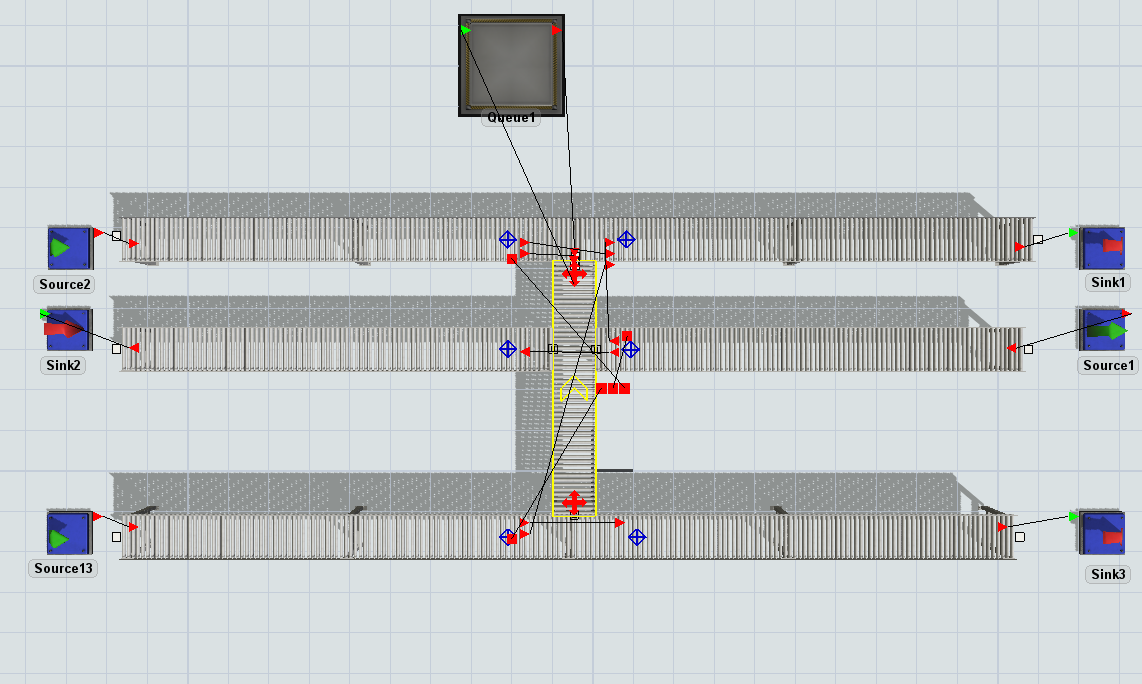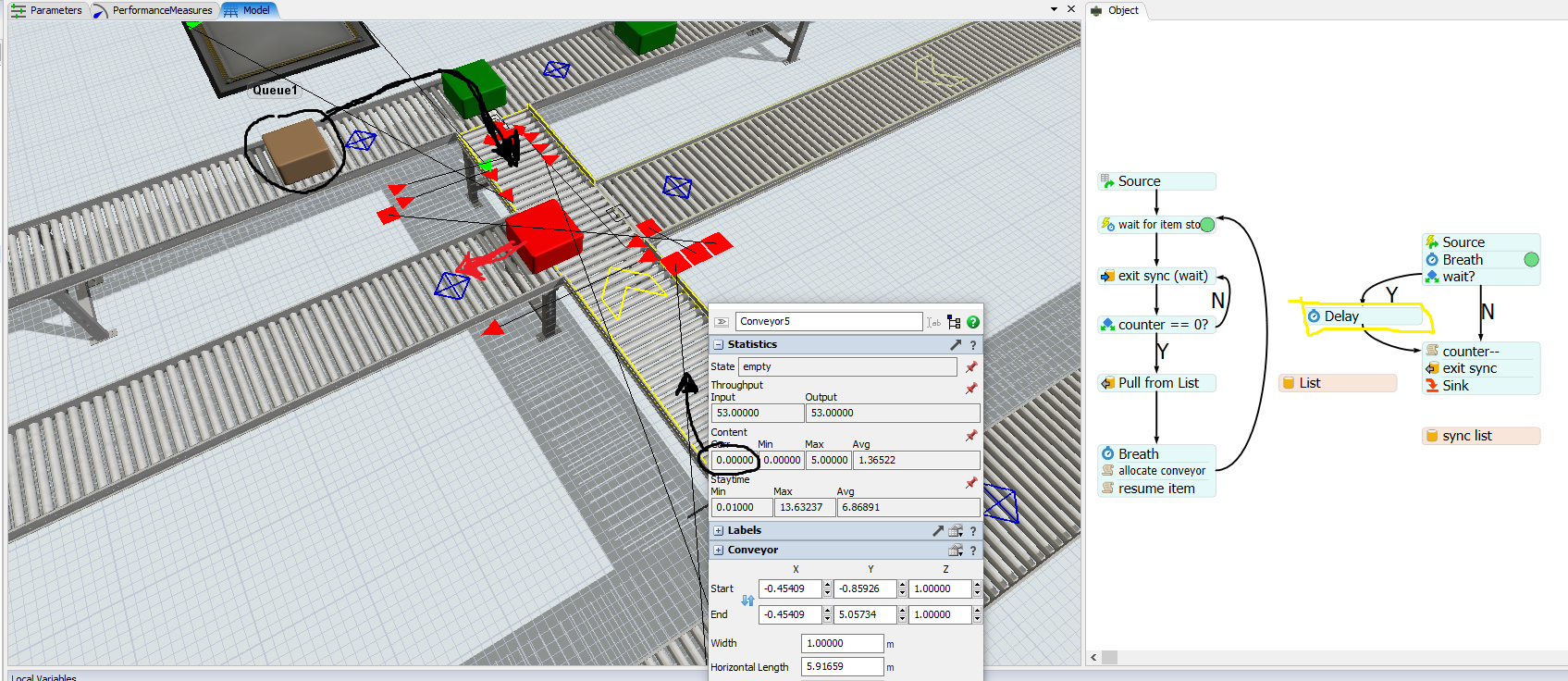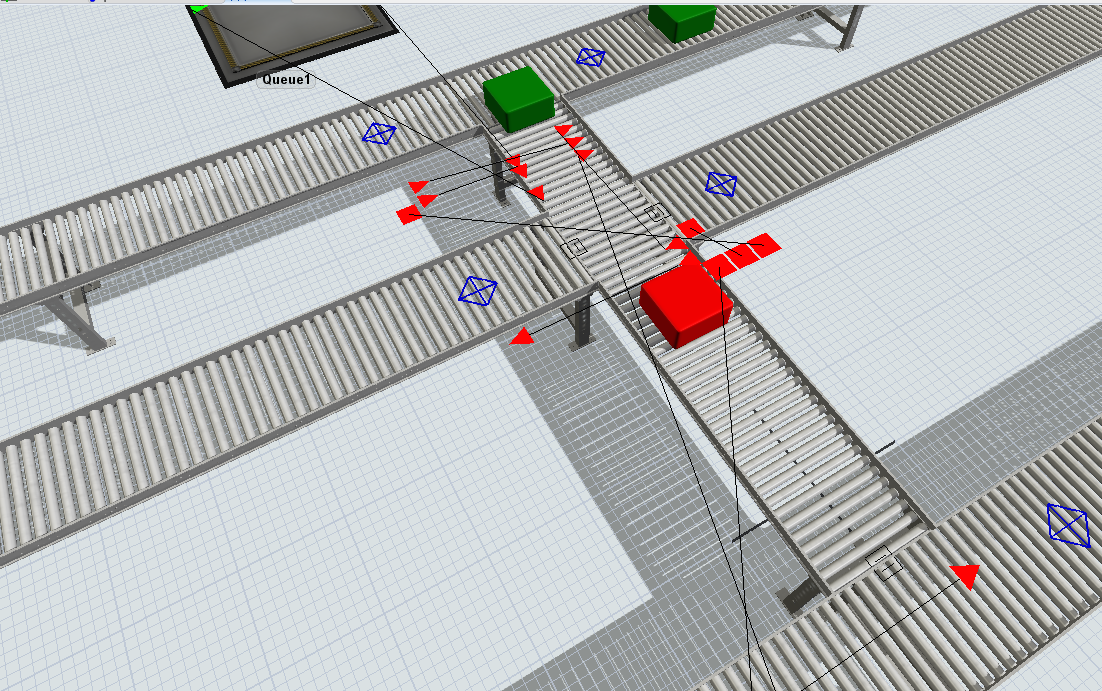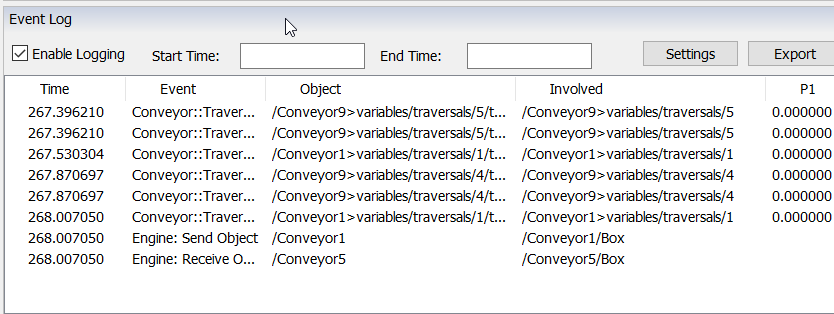Hi,
I make a model with a conveyor crossing. The second and the third horizontal conveyors send items or right or at first horizontal conveyor. The first one from above instead sends items or right or to the third horizontal conveyor. All transfers are made through the central conveyor.
The problem is that the central conveyor has the default upward speed. This is good for the transfers from second and third conveyor but when I must send items from first to third conveyor I must change speed. The speed is changed when items arrive at Control points of start conveyors.
Where is the problem? looking at the picture below the red item is entering in its exit conveyor and it is crossing the Transfer Type. The item circled in black is coming at control point and it will send to third conveyor. In this moment in the central conveyor there isn't items as indicate the current property.
When the item arrives to the control point (the item color changes in green) the target speed of central conveyor reverses becouse in this way the item can reach the third conveyor. Suddenly the red item, despite being out from central conveyor, feels the change speed and it wrongly goes to the third conveyor too.
Why it happens? Could it be a problem due to the transfer type that in someway still link the red item to the central conveyor?
In any case in this model before sending the item of first conveyor, it is stopped and with the process dalay (highlighted in yellow in the picture above) it will wait a time equal to the translation time of the red item on the transfer type.
It might be a good temporary solution.
Do you have any idea how to solve this issue?
I attach the model to the question.
Thanks in advance for the support.





